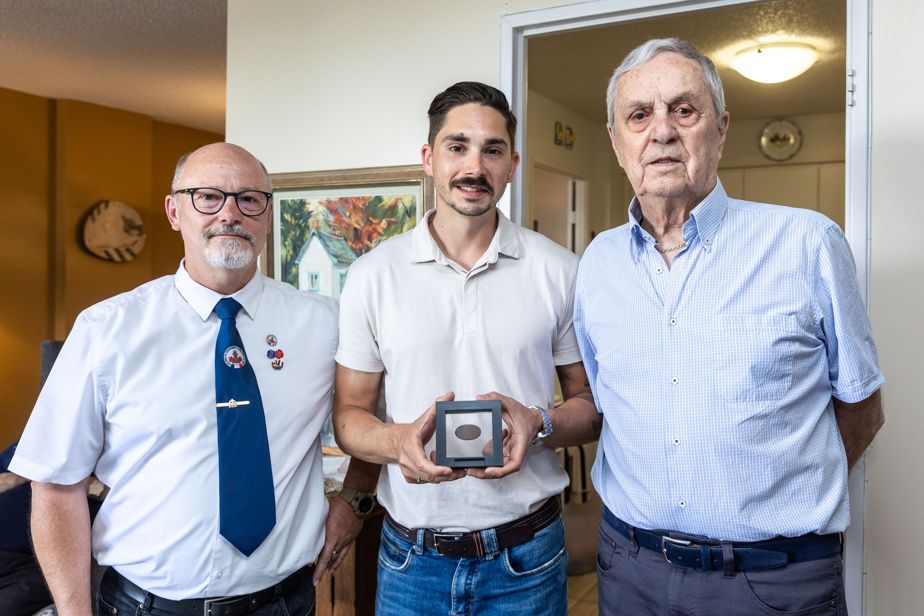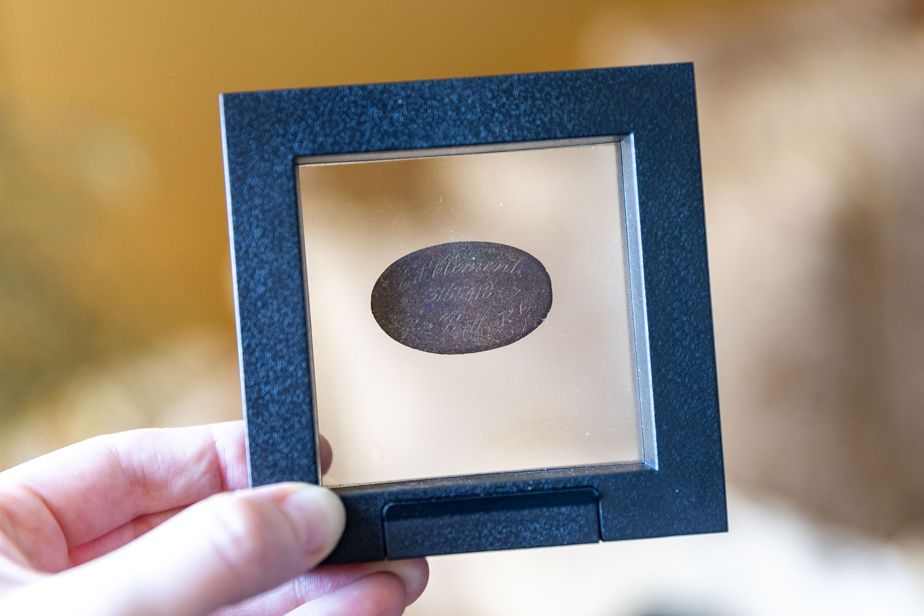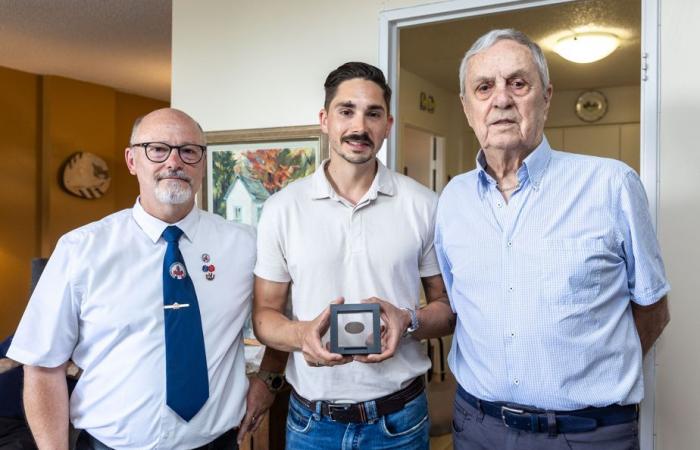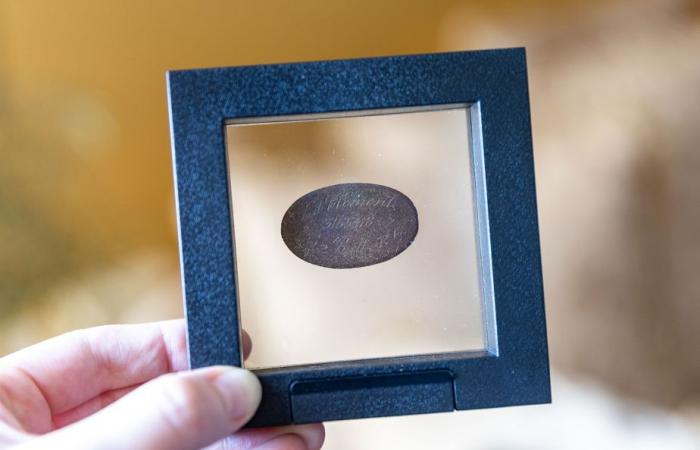The identity document of a Canadian soldier from the First World War found in France a century later.
Published at 12:58 a.m.
Updated at 5:00 a.m.
Chloe Bourquin
The Press
“My grandfather never really spoke to me about his father. If this object had not been found, I would perhaps never have heard of this whole story,” emphasizes Édouard Dansereau.
This story is that of Édouard Clément. Enlisted in Montreal in 1918, at age 22, he crossed the Atlantic to fight in France. While training in a wood near the town of Arras in northern France, he accidentally lost his identity tag – a metal object that soldiers carried with them to identify them in case of deceased. At the end of the war, he returned safely to Quebec, to Pointe-Claire, where he married and had ten children. He died in 1962.
PHOTO JOSIE DESMARAIS, THE PRESS
Édouard Clément fought during the First World War.
It was only almost a century later that this plaque was found in France by a prospecting enthusiast. Then, for 15 years, it passed from hand to hand, in the hope of learning more about this “Ed Clément”, registration number “3155418”.
“Was he hurt?” Had he survived the war? We didn’t know it at the time,” says amateur historian Fabrice Théry, who is part of the Friends of the Canadian Vimy Monument, a French association which commemorates the memory of the participation of Canadian soldiers during the Great War.

PHOTO JOSIE DESMARAIS, THE PRESS
Amateur historian Fabrice Théry, Édouard Dansereau and Gilles Clément, respectively great-grandson and son of soldier Édouard Clément, whose identity plate was found almost a century later.
A well-conducted investigation
In May 2024, his association ended up posting a message on a Facebook group bringing together history enthusiasts and families of Canadian veterans, with the photo of the plaque.
When Martine Chiasson sees the message, she immediately gets down to the task. Genealogical sites, documents from the National Library and Archives of Quebec (BAnQ), social networks. “I sent bottles into the sea everywhere,” she sums up with a laugh.
In just a few hours, she found the descendants of Édouard Clément and came into contact with them.

PHOTO JOSIE DESMARAIS, THE PRESS
Édouard Clément’s identity plate
The plaque finally crossed the ocean again, 106 years later, to be given to his family by the association during an intimate ceremony on June 16.
When history hangs by a thread
Édouard Clément’s son, Gilles, welcomes us for the ceremony in his apartment in Pointe-Claire. He describes his father as a stern man, who listened a lot, but who spoke little – and, above all, “never about the war”, he emphasizes.

PHOTO JOSIE DESMARAIS, THE PRESS
Martine Chiasson helped find Édouard Clément’s family. She is also a violinist and played during the plaque presentation ceremony.
Around twenty members of the soldier’s family are present, spanning several generations. Fabrice Théry takes the time to tell them about their ancestor’s journey during the war, which he managed to retrace using the archives. He was notably called up urgently on August 30, 1918 to replace the terrible losses suffered by his battalion, decimated during the Battle of Chérisy on August 27 and 28. “If he had arrived two days earlier, he might not have returned home,” says the amateur historian.
During the ceremony, a few tears were shed. A piece of music that Édouard “could have heard during his lifetime” was played by Martine Chiasson, who is also a violinist.
“I’m not a big genealogy enthusiast to begin with, but I was struck by a lot of unexpected emotions when I heard this whole story,” confides Édouard Dansereau, who has the same first name as his great-grand -father and to whom the plaque was given. “Of course we will try to pass it on, so that it lasts another 100 years,” he says, smiling, his 11-month-old son in his arms.










